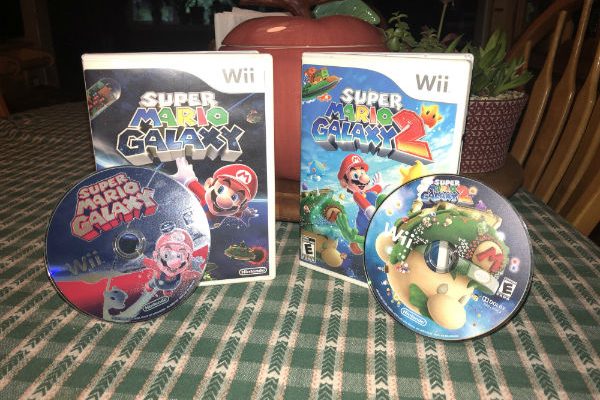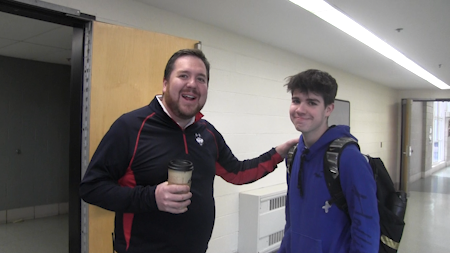It’s not an unknown fact that the Nintendo Wii wasn’t home to the best games. The console had an influx of third party games that were hastily thrown together and do not hold up well today for several factors, such as outdated graphics and controls. Due to the Wii’s target demographic being families, a lot of family mini-game compilations were released. Some of the Wii’s best-selling games were third party family targeted games, with a few being Carnival Games produced by 2K Games and Game Party produced by FarSight Studios (lifewire.com). These games gave a bad name to Nintendo’s best selling console, but this system is home to one of the greatest games of all time: Super Mario Galaxy.
In 2004, Nintendo Entertainment Analysis and Development (Nintendo EAD) began working on Super Mario Galaxy (SMG) after the release of Donkey Kong Jungle Beat, a different game released on the Nintendo GameCube. Shigeru Miyamoto, a Nintendo video game designer and producer most known for creating the Mario series, decided it was time for a new main series Mario game (engadget.com). The last Mario game released in the main franchise from Nintendo was Super Mario Advance 4; Super Mario Bros 3 which was a port of the original game now playable on the Gameboy Advance.
Back at Nintendo Space World (a video game trade show held from the years 1989 to 2001) in the year 2000, Miyamoto showed a tech demo called “Mario 128” which was a supposed sequel to one of the best selling Mario games Super Mario 64 (tremr.com). The demo showed a world with 128 marios running around on a planet like structure, showing the strength of the Nintendo 64 console. Miyamoto originally promised a proper sequel to SM64 was in the works, which turned out to be false. It was merely a demo to show the capability of a potential future game with gravity mechanics.
Four years later, it was revealed that Miyamoto was planning on releasing a game using the gravity functions in a new main line Mario game (bgr.com). Nintendo aimed to make this game appeal to all ages and the team at Nintendo was given more freedom to design as they please due to the outer space setting. Nintendo musical composers Mahito Yokota and Koji Kondo worked together to orchestrate an entire soundtrack, making SMG the first Nintendo game with a fully orchestrated score.
On November 12, 2007, SMG was released to North America and was met with commercial success. The score was compiled into an album and was released for purchase in a physical CD in January of 2008. The actual copy of the CD is quite rare, and because of this, it retails for absolutely crazy prices on Amazon (a mere $70 for a used one). As of today, the game has sold 12.78 million copies worldwide, making it the best selling Wii game of all time (forbes.com).
The game itself follows everyone’s favorite plumber attending the Star Festival at the Mushroom Kingdom. The Star Festival takes place every one hundred years where the sky fills with shooting stars and comets. Princess Peach sends a letter to Mario asking if he would like to join her to have cake and watch the stars. Mario accepts, and embarks on a quest to the Princess’s castle. Upon arrival, Mario is met with Bowser’s Airship Squad hovering over and freezing toads in crystals. In the sky, one of Bowser’s UFO’s pulls in and digs Peach’s Castle out of the ground. Chains swing out from the airships and the Castle is lifted into space. Lucky for Mario, he was on the pathway to the castle, and he was pulled into space with the crowd. He is blasted off into space and embarks on a mission to get the princess back and return to the Mushroom Kingdom.
So what makes this game one of the greatest of all time? Well, it has been critically acclaimed by Metacritic, the lead review website for every video game under the sun. The games are ranked on a scale of zero to one hundred, zero being the absolute worst and one hundred being the absolute best. This is called the MetaScore. Super Mario Galaxy holds a MetaScore of ninety-eight, ranking in Metacritic’s top ten games of all time. Only a select few games are entered into the ninety range of the world of MetaScores, as the website is very strict when it comes to grading. When a game is in the nineties, let alone the high nineties, it can be assumed that the game is absolutely incredible. In the world of video games, if there is just one small issue, like soundtrack or visuals, the quality of the game completely plummets.
One reviewer from Metacritic under the name “Nintendo Gamer” gave the game the rating of ninety-seven, describing the game as one that brings forth the childhood joy in everyone.
“Super Mario Galaxy is one of those rare games that makes children of us all, that’ll have you straight on the phone to your gaming comrades, throwing out terms such as ‘best game in years!’” the reviewer shared.
Another critic under the title GamePro shared that Super Mario Galaxy was the true icon of the Nintendo Wii. The Wii was an underpowered console but SMG showed that the console was capable of housing some of the best pieces of gaming media ever.
“SMG raises the bar in terms of what can be achieved on the Wii. It’s a game you want to take your time with because there is so much to explore and each time you go back, there’s something new you’ve never discovered before. It has that replay value every good game needs,” GamePro shared.
Ratings among critics range from ninety to one hundred, with user reviews having a tremendous 593 positive scores. It’s agreed by many critics and users alike that the world of Mario exploring the cosmos was technologically ahead of its time. Graphics are slightly dated due to the lack of HD in the Wii, but for a 2007 release, it holds up really well. Other than graphics, this game is universally praised for the soundtrack. Being Nintendo’s first journey into the fully orchestrated game scores, SMG was an excellent start and set Nintendo off on the right foot, with games coming later also starring some orchestrated scores (Super Mario 3D Land for the Wii U and World for the 3DS, The New Super Mario Bros. Series for Wii and Wii U, and Super Mario Odyssey for the Switch).
Overall, the game is one critics recommend everyone plays at least once. Due to its high score, SMG was given the title of a Metacritic Must-Play. The game is a special experience, sending the player and Mario somewhere they’ve never been: space. It is a joy to play and control, and some of the creative galaxies have players coming back for more. It has been twelve years since the release of the first SMG, and it is one of the rare gems produced by Nintendo. The game is pretty out of this world.
Two years after the release of the first game, producers at Nintendo created a file under the name of “Super Mario Galaxy MORE” which was originally planned to be released as downloadable content (DLC) for the main game. However, the project got a lot bigger than the creators intended and later on decided to release it as its own game (5027mac.org).
The game follows the same storyline as the last, but this time, Bowser is using the power of the stars to make himself massive. He steals the princess to rebuild his empire in the center of the universe and Mario is blasted onto a broken spaceship and he uses the stars the help the ship regain power.
The game released on May 23, 2010 in North America and sold around 500k in the first month of being on the market (engadget.com). According to Engadget Author JC Fletcher, the sequel to one of the best-selling mario games saw dropping sales compared to its predecessor.
“While one million copies in two months (41 days of NPD reporting time) is impressive, it doesn’t approach the level of success enjoyed by the first Super Mario Galaxy, which broke a million in its first month on the market, only 12 days of which counted for NPD,” Fletcher shared.
The prequel saw the same excellent reviews as the original, receiving a ninety-seven on Metacritic, only one point off from the ninety-eight One got. Most points were removed because the game felt like a lot of the same, as the review from the Official Nintendo Magazine UK shares.
“It expands and elaborates on the gameplay in unpredictable ways; however, the last one felt like a bigger, more complete adventure,” the magazine stated. Other reviewers believe that the sequel is better than the original, like the reviewer under the name “Games™” shared.
“No matter which side of the gaming coin you come from, this whole new universe of planets is the most inventive and exuberant experience. It leaves us wondering how close Nintendo’s bar has come to reaching its theoretical peak,” the reviewer wrote.
Overall, the game was great; it was just too similar to the last game for people to really enjoy. To compare the two, SMG2 is just a retelling of the same story that took place in the original SMG.
One Woodland student, Chrystal Sheehan, shared that this short series is truly one of a kind and does what it tries to do very well.
“I always watched my friend play the game because I never had a Wii of my own, I’m more of an Xbox person,” Sheehan shared. “But from what I saw when I watched, the game was beautiful and told a simple story in the most unique way.”
She went on to explain that the game’s storybook style is good at tying up loose ends. Some games have open endings, but both of the Galaxy games use the storybook to keep things moving along and at the end, the player knows they completed it in the way the book intended.
After further inspection, a lot of Woodland students have heard of the galaxy games, with twenty three saying yes and ten saying no:
out of those votes, some people have played either game (seventeen votes) while others have not (six votes):
Considering the Wii was one of the best selling consoles of all time and SMG1 was one of the best selling Wii games of all time, it’s predictable that a lot of students had the game. However, it might be more likely they have heard of the game due to high praise from critics and from sources like YouTube rather than having first hand experience playing the game. Due to websites like YouTube, it is easy to look up a game and watch a walkthrough, especially with games as old as Super Mario Galaxy. From large gaming YouTube channels such as The Game Theorists, Scott the Woz and AntDude, the galaxy games have received a ton of attention and the videos have received millions of views.
At the end of the day, these games are unique and worth checking out. Their high praise from critics and their replay value hold up to this day. The Wii might be a dead console and not as popular as it was back in the mid-2000’s; however, the Super Mario Galaxy series is iconic and worth all the praise. Should it be available to current day gamers, MetaCritic recommends they pick the game up. They are pretty out of this world.




















